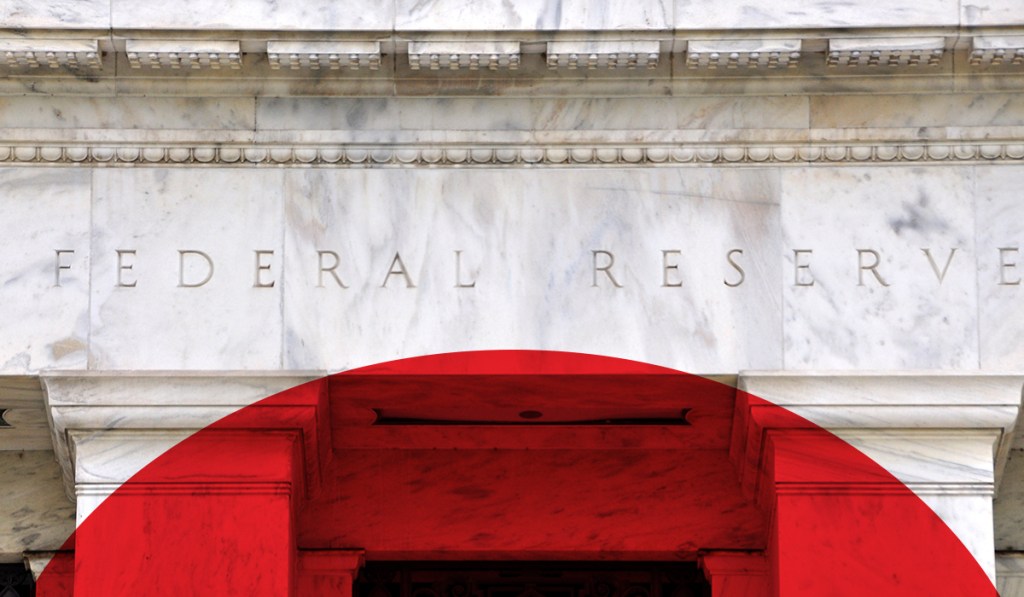This article is part of our 2022 – 2023 Housing Market Update series. After the series wraps, join us on February 6 for the HW+ Virtual 2023 Housing Market Update. Bringing together some of the top economists and researchers in housing, the event will provide an in-depth look at the predictions for this year, along with a roundtable discussion on how these insights apply to your business. The event is exclusively for HW+ members, and you can go here to register.
After two years of runaway home prices, the Federal Reserve stepped in to reverse engineer rampant inflation, and it has been utilizing the housing market as one of the main economic engines to achieve its objective. They increased the Federal Funds Rate from nearly 0% at the start of 2022 to 4.5% in December 2022, its highest level since 2007 and its fastest rise in more than 40 years.
Long-term mortgage rates responded by rising from 3.25% in early 2022 to over 7.25% in October 2022, more than doubling. They eased below 6.5% recently as core inflation numbers improved for the third consecutive month. The Consumer Price Index core inflation, less the volatility of food and energy, is currently at 5.7%, after peaking at 6.7% in September 2022. The Fed’s core inflation goal is 2%, so they still have a long way to go. The overall U.S. economy has remained resilient, backed by a very strong labor market, sky-high job openings and low unemployment.
Mortgage interest rates
The unrelenting Fed policies to combat inflation will eventually instigate an economic recession sometime in 2023. The coming recession is more likely to have less of an impact on employment, more of a “soft-cession” than a typical recession. As a result, the local housing market is going to be subdued in 2023, especially in the first half of the year.
Just as 2022 was all about rising mortgage rates and rising inflation, 2023 is going to be all about falling mortgage rates and falling inflation. After blowing past the 2% core inflation target in April 2021, it continuously rose for 18 months until peaking in September 2022. It did not hit 6.7% overnight.
It was more like a dimmer switch that was slowly increasing. Similarly, core inflation will not drop to 2% instantly, that same dimmer switch will apply in the future. It will take all of this year and into 2024 for it to come back down to the Fed’s target. As inflation eases, so will long term mortgage rates. Slowly, but surely, rates will drop below 6% and will continue their slow trajectory downward, dropping below 5.5% most likely by mid-year.
Inventory
What does that mean for housing? Until mortgage rates drop below 5.5%, we can expect low housing supply, which favors sellers. We can also expect low housing demand, which favors buyers. Higher mortgage rates have severely impacted demand. The insane, fast-paced housing market of the COVID-19 pandemic years has vanished.
Demand for housing is similar to Great Recession levels, but this time it is matched up against an extremely limited supply. As mortgage rates drop, expect demand to improve, especially in the second half of 2023. Until then, home values will slowly decline, most assuredly in high-cost areas and in areas of the country that benefited the most from rampant appreciation during the pandemic.
Since the COVID-19 pandemic lockdowns of 2020, inventory has dropped to record-low levels both in 2021 and 2022. The inventory hit catastrophic, low levels due to a limited number of homes coming on the market coupled with insatiable demand driven by record-low rates.
The inventory changed last year as rates finally rose higher, eating into demand. Homes no longer sold instantly, they lingered on the market and over time the inventory grew. Yet, even with higher rates, the inventory stopped growing and it has fallen short of reaching pre-pandemic levels.
The COVID-19 pandemic suppressed the inventory in 2020 and 2021. Fewer homeowners opted to sell. When COVID-19 took a back seat to normal life in 2022, it was to be the year when more homeowners were poised to enter the fray. That did not occur as many homeowners “hunkered down” and opted to not move.
Homeowners may not have been in love with their homes, but they certainly were in love with their loans. 86% of homeowners with a loan had an underlying mortgage rate at or below 5%. Nearly two-thirds had a rate at or below 4%. And a very fortunate 24% had a rate at or below 3%. As a result, fewer homeowners placed their homes on the market in comparison to the 3-year average prior to the COVID-19 pandemic (2017 to 2019).
Take a look at Southern California, for example, there were 51,000 missing sellers from the market compared to the 3-year average, which is roughly 19% fewer homes for sale. This trend grew significantly as 2022 progressed and severely limited the supply of homes from growing to its true potential. As mortgage rates drop this year, the “hunkering down” effect will wane.
The bottom line: 2023 will be sluggish compared to 2022 for the first half of the year. Remember, the market was hot through May, so year-over-year stats will look absurd. Yet, the second half of 2023 promises to be better than the second half of 2022 as rates ease, demand rises and more homeowners will be willing to sell.
The housing market is no longer insane, homes are for the most part not selling above their asking price, not selling immediately, not selling with multiple offers and there is far less activity and buyer competition.
This column does not necessarily reflect the opinion of HousingWire’s editorial department and its owners.
To contact the editor responsible for this story:
Sarah Wheeler at sarah@hwmedia.com





